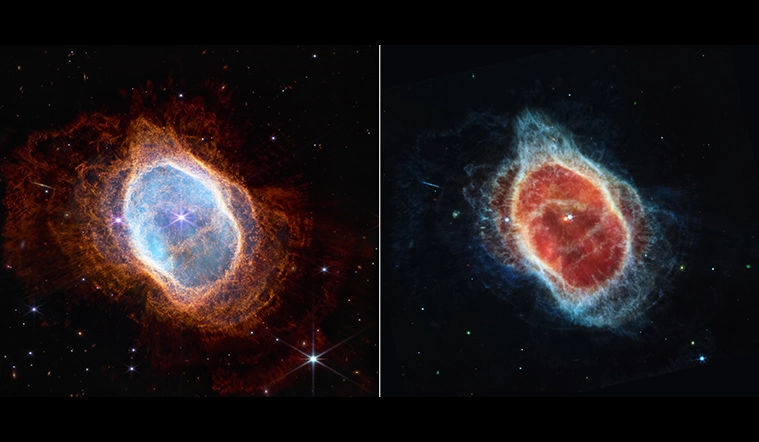The National Aeronautics and Space Administration (NASA) on Tuesday released additional images captured by the James Webb Space Telescope. The previous image revealed the galaxy cluster SMACS 0723. Webb’s First Deep Field is a composite of images taken at various wavelengths. It was created using images captured by the Near-Infrared Camera (NIRCam).
Also Read| James Webb Space Telescope: How scientists, leaders reacted to the cosmic view
Here are all the new images from the telescope-
WASP-96 b (spectrum)

The second ‘image’ is a spectrum of WASP-96b, a gas giant planet 1,150 light-years away from Earth. This is Webb’s first exoplanet spectrum. It reveals previously hidden wavelengths. The spectrum reveals the water vapour signatures of the planet. Mercury is closer to its star than our sun is to us.
WASP-96 b is a massive gas-filled planet outside our solar system. The planet orbits its star every 3.4 days and is nearly 1,150 light-years away from Earth. It has roughly half the mass of Jupiter and was discovered in 2014.
Also Read| James Webb vs Hubble: How the images from the two telescopes differ
Southern Ring Nebula

The third image is a near-infrared image of the Southern Ring Nebula, also known as the “Eight-burst Nebula,” which is a planetary Nebula that encircles a dying star.
For thousands of years, the dim star in the centre of the scene has been emitting rings of gas and dust. Webb has revealed, for the first time, that the star is shrouded in dust. The image on the left was captured in near-infrared light by the NIRCam, while the image on the right was captured in mid-infrared light by MIRI.
Stephan’s Quintet

The fourth image is the Stephan’s Quintet, it is located in the constellation Pegasus, approximately 290 million light-years away. It is significant as the first compact galaxy group discovered.
Four of the quintet’s five galaxies are locked in a cosmic dance of repeated close encounters.
Also Read| James Webb Space Telescope: What is seen in the picture?
At first glance, this Webb image appears to be identical to the Hubble version, but the new telescope’s infrared sensitivity will reveal new features for astronomers to investigate.
The James Webb Space Telescope has provided a glimpse into the past billions of years. It used light billions of years old to create a photograph that allows humans to peer into the past.







